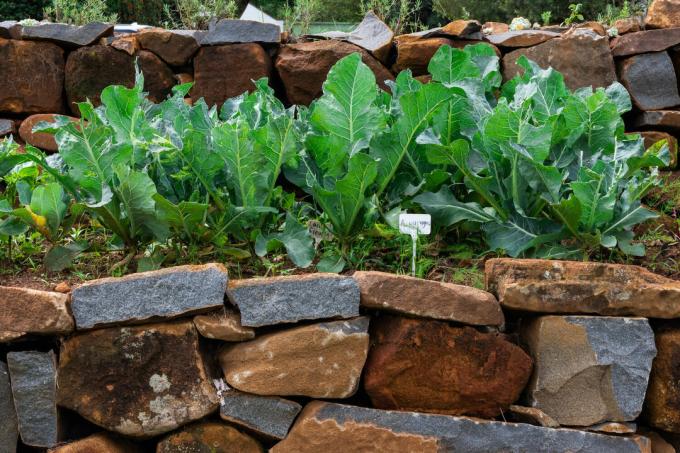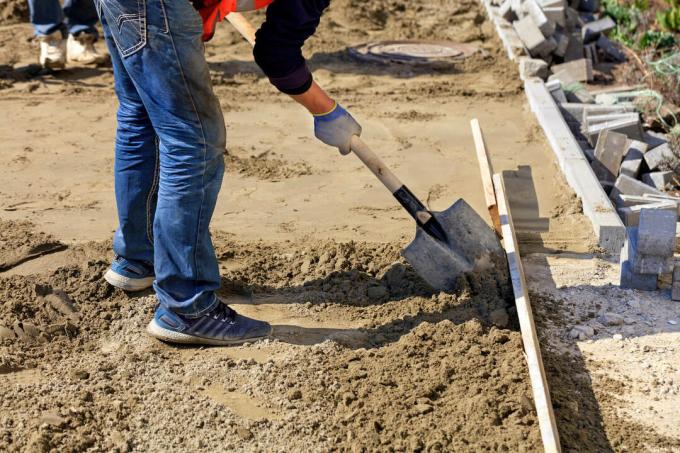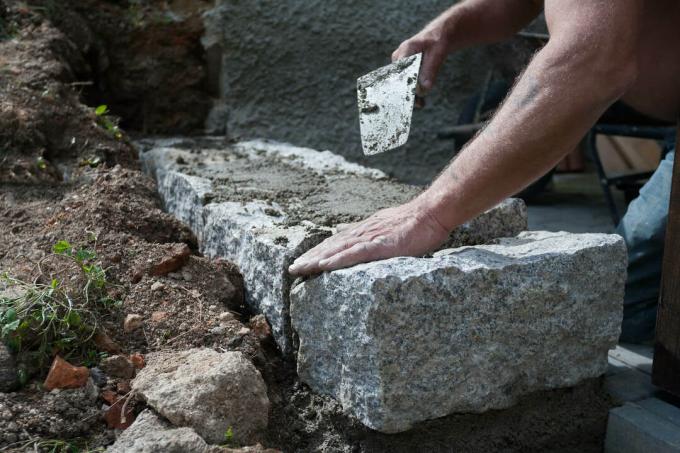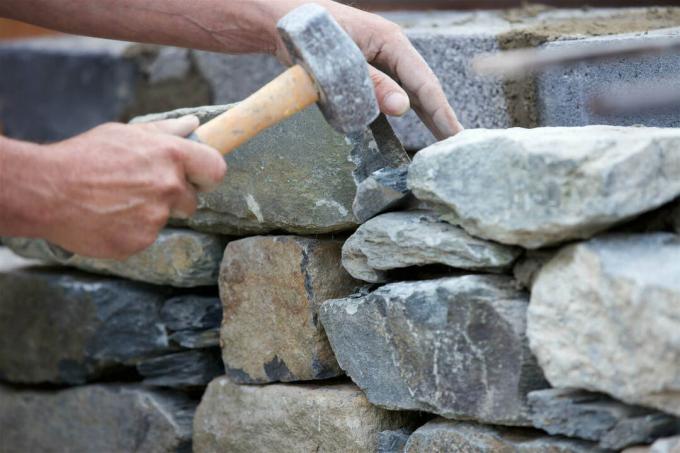A raised bed made of natural stone has a very special look and advantages for the plants in it. We explain how natural stone can be used to build a raised bed.

Natural stone has been used for walls and buildings for thousands of years. More and more patios and walkways made of this robust material can also be found in the garden. But bed borders and raised beds can also be designed with natural stone. In this article you will learn how to build a natural stone raised bed yourself.
contents
- Raised bed made of natural stone: advantages
- Build your own raised bed out of natural stone
- Fill the natural stone raised bed correctly
Raised bed made of natural stone: advantages
Raised beds made of stone have a very long service life, they are weatherproof and not easily damaged. But which stones are suitable for a raised bed? There are hardly any limits to the design of raised beds made of natural stone, because numerous types of stone with their individual properties and colors are suitable for this. In addition to coarse-pored tuff, dark-grey basalt, grey-whitish limestone and extremely hard, shiny granite, the ocher-colored, light-colored sandstone is also suitable for raised beds.
Stones store heat on sunny days and slowly release it into their surroundings at night. Especially in spring and autumn, the soil in the bed stays warm longer, which benefits pre- and post-cultures. In addition, the stones insulate against the cold and can thus effectively protect plant roots from short frost episodes.
The natural stone wall as a raised bed border not only brings advantages in terms of heat storage for the plants in it. Numerous animals, such as lizards and insects, also find shelter in the cracks in the wall. The joints can also be planted and can optically loosen up the often bulky natural stones and provide them with splashes of color. Particularly robust ones are suitable for this Rock Garden Plants.
Advantages of natural stone raised beds at a glance:
- Very durable, robust and weatherproof
- Individual design through large selection of stone types
- Heat storage and release to the environment
- Insulation and protection against frost in spring and autumn
- Habitat for plants and animals in cavities and joints

Build your own raised bed out of natural stone
Some experience with stone construction and the appropriate tools - i.e. rubber mallet, spirit level, Stone cutter, vibrating machine or roller and spatula - are the prerequisites for the successful construction of a raised beds. If you are unsure of your skills, you should better hire an experienced GaLa builder or bricklayer.
Before building the natural stone raised bed, the subsoil must be prepared. Stone walls are heavy, a good foundation under the base of the raised bed prevents sinking and provides more stability. Massive raised beds with large stones should have a concrete foundation. For most raised beds, however, a foundation made of compacted chippings or fine gravel is suitable. On slopes, however, concrete usually has to be used to ensure sufficient stability. The foundation for a raised bed made of natural stone measuring 140 x 70 x 80 cm should be around 60 cm deep - this must be adjusted depending on size and weight. First, dig the trench for the foundation, fill in gravel and compact it with a shaker. Repeat backfilling and compacting until the pit is filled. Now build up a layer of sand about 10 cm high, which you in turn compact and straighten.

Carefully draw the outline of the future bed or stretch out guide lines. Now it's time for the first row of walls. Lay the bricks, straighten and fix them with a rubber mallet. After the first row, check again carefully with a spirit level whether the stones are straight, because a slope in the first row later runs up through the wall. Once everything has been straightened out, it's time to continue building your natural stone raised bed. Depending on the type of construction - with mortar or as a dry wall - layer and wedge the stones until the raised bed has reached the desired height.
At a glance: Instructions for a raised bed made of natural stone
- Choose a location, mark the size and dig a deep ditch depending on the size of the raised bed.
- Fill in the foundation made of chippings and compact. In the case of slopes: embedding in concrete is absolutely necessary.
- Pour on approx. 10 cm leveling layer of sand and compact.
- Mark out the area exactly, possibly tighten with cords.
- Place stones in the first row, check carefully with a spirit level.
- Continue building the wall, dry layered or with mortar, depending on the construction method.

Fill the natural stone raised bed correctly
If the raised bed made of natural stone is stable, you can start filling it. A lining with knobbed foil protects dry stone walls from soil erosion and the stone from moisture and frost cracks. A close-meshed vole grid is often useful for raised beds on topsoil.
The filling is done classically from bottom to top with coarse to fine material. While branches, wood chips and leaves are filled in below, a layer of compost is followed by the potting soil in which the future cultures will take root. Our made in Germany Plantura organic compost is ideal as a second layer in the raised bed under the plant layer. Due to the high compost content, it promotes soil life and humus formation. From what materials Raised Bed Layers You can find out exactly what they are and what their function is in our special article.
A natural stone wall is much more robust than building kits, but it is also very time-consuming. Anyone looking for a faster way will consult our article "Create a raised bed in 10 minutes" find it.


